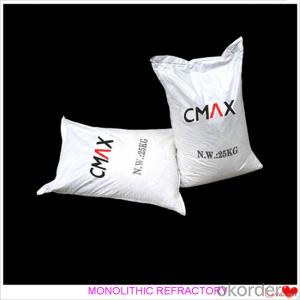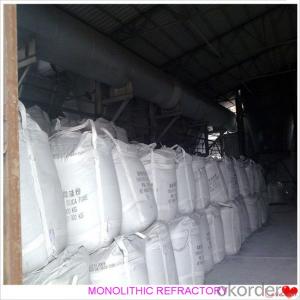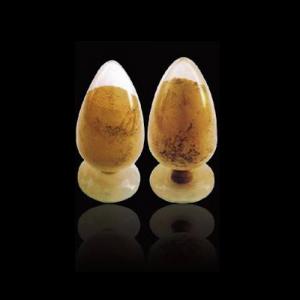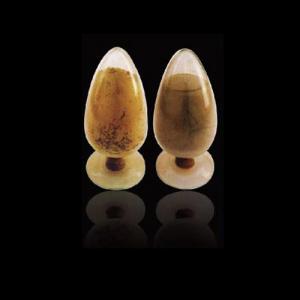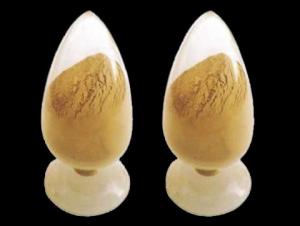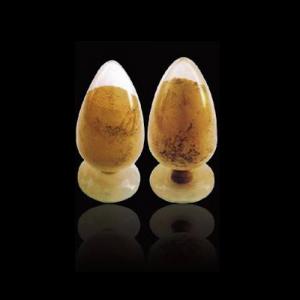Mullite Castable For Fireplace and Industrial Furnace in Iron and Steel
- Loading Port:
- China main port
- Payment Terms:
- TT OR LC
- Min Order Qty:
- 1000 kg
- Supply Capability:
- 3000000 kg/month
OKorder Service Pledge
OKorder Financial Service
You Might Also Like
Mullite Castable For Fireplace and Industrial Furnace in Iron and Steel
Product Description:
Mullite castable is manufactured according to international standards. The product is famous for its excellent abrasion resistance and low thermal conductivity. Further, these can be provided in different specifications as required by the clients. The Mullite castables are used high purity raw materials and additives as the main material, and made of under superfine powder adding technology.
Product Advantages:
The material has excellent structural stability and air tightness, and has high physical and chemical properties, also has a fine working ability.They should be used with the same material products.
Product Applications:
For feature of Mullite castable, they have excellent abrasion resistance, thermal shock resistance, high-temperature resistance, anti-corrode and have high intensity.
Designed for refractory lining of blast furnace iron and slag runners, skimmers and soon
They can be used in troughs of small and mid size BFs and in all positions of the troughs where fast tapping is required.
Product Specifications:
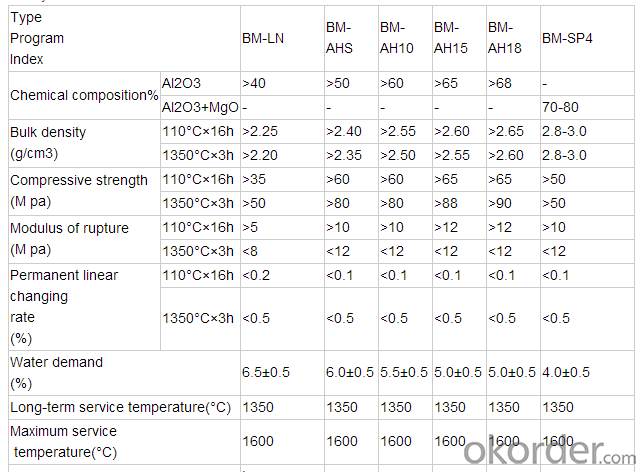
FAQ:
1. How you can control your quality?
For each production processing, we have complete QC system for the chemical composition
and Physical properties. After production, all the goods will be tested, and the quality certificate
will be shipped along with goods.
2. What's your delivery time?
It usually needs about 20days- 45 days after receiving the deposit.
3. Do you provide free samples?
Yes, we can provide a free sample for testing, If we have sample in stock,
The quantity based on the material type, The buyer should bear all the shipping costs.
4. What's your payment terms?
We can accept 30% deposit, 70% balance before shipment for ordrs over $ 2000.
5. Can we visit your Company?
Yes, certainly. You are very welcome to China and we will be honored to have a customer and friend.
Product Picture:
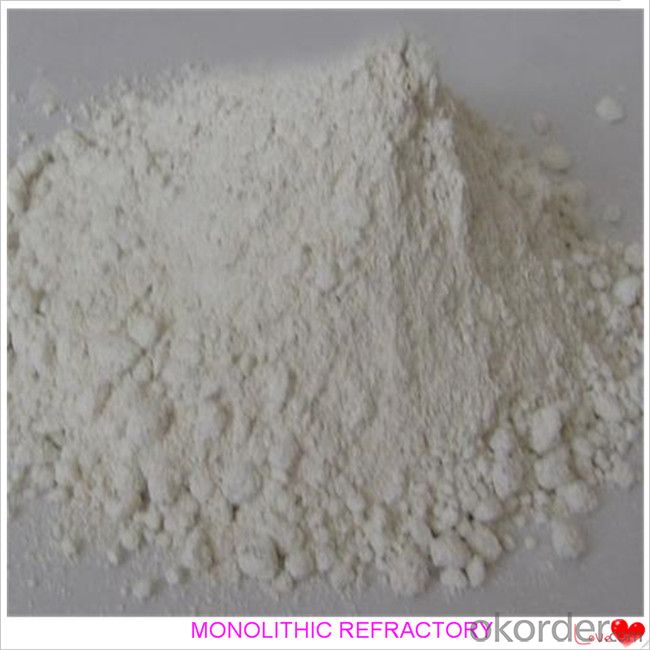
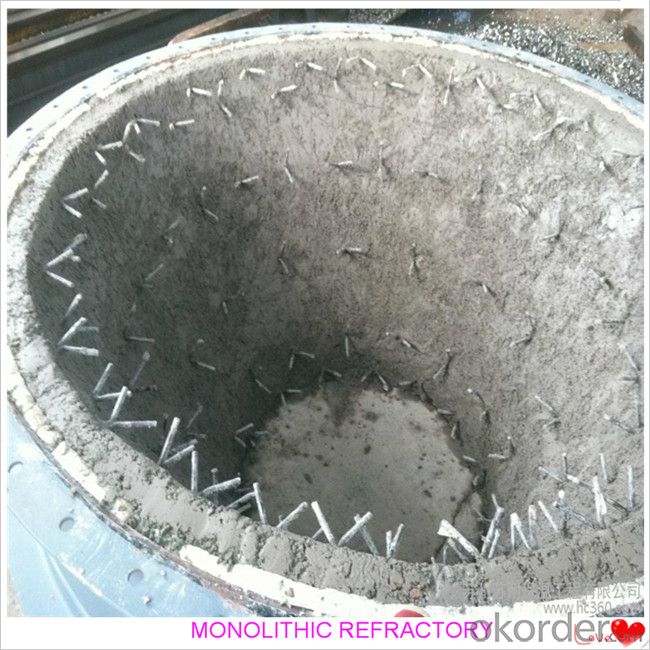
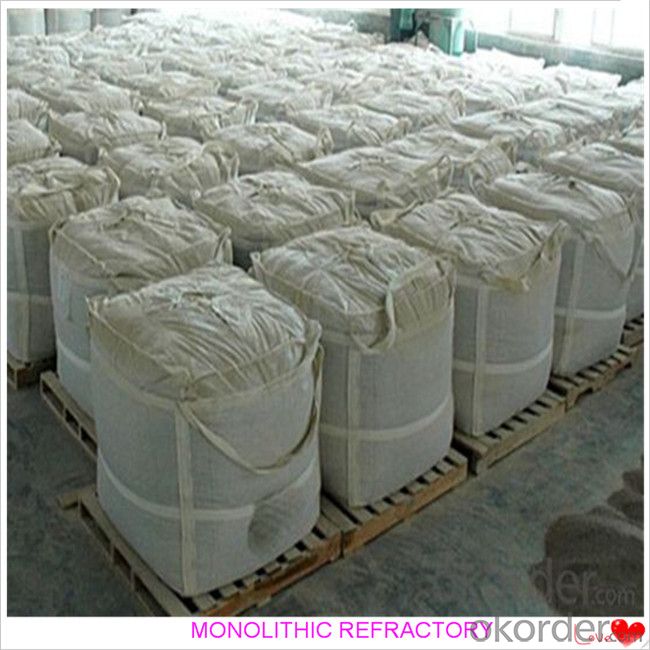
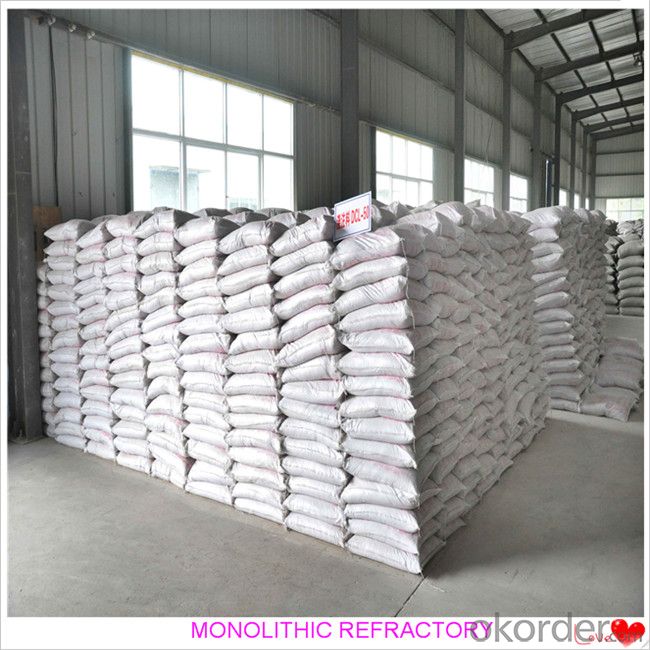
- Q:How can the lifespan of monolithic refractories be extended?
- The lifespan of monolithic refractories can be extended through proper installation techniques, regular maintenance, and careful handling.
- Q:How long is the lifespan of monolithic refractories in iron and steel applications?
- The lifespan of monolithic refractories in iron and steel applications can vary depending on several factors. These factors include the type of refractory material used, the specific application, the operational conditions, and the maintenance practices implemented. In general, monolithic refractories used in iron and steel applications are designed to withstand high temperatures, thermal shock, chemical attack, and mechanical stress. They are expected to have a relatively long lifespan compared to other refractory materials. Under normal operating conditions and proper maintenance, monolithic refractories can typically last anywhere from several months to several years in iron and steel applications. However, it is important to note that certain areas of the application may experience more severe conditions and may require more frequent repairs or replacements. Regular inspections and monitoring of the refractories' condition are crucial to identify any signs of deterioration or damage. Any necessary repairs or replacements should be carried out promptly to prevent further damage and minimize downtime. It is also worth mentioning that advancements in refractory technology and materials have led to the development of more durable and long-lasting monolithic refractories. These advancements have increased the lifespan of refractories in iron and steel applications, ultimately improving the overall efficiency and productivity of the operations.
- Q:What are the typical applications of monolithic refractories in blast furnaces?
- Monolithic refractories are widely used in blast furnaces due to their unique properties and applications. These refractories are composed of a single, homogeneous material that can be shaped and installed in various forms without the need for joints or seams. This characteristic makes them ideal for lining and protecting the different zones of a blast furnace. One typical application of monolithic refractories in blast furnaces is the lining of the hearth. The hearth is the bottom part of the furnace where molten iron and slag accumulate. Monolithic refractories are used to create a durable and heat-resistant lining that can withstand the extreme temperatures and chemical reactions occurring in this area. Another common application is the lining of the bosh, which is the transition zone between the hearth and the stack of the blast furnace. The bosh is subjected to high temperatures and mechanical stresses due to the movement of the burden materials. Monolithic refractories with high thermal shock resistance and abrasion resistance are used to ensure the longevity and efficiency of the bosh. Monolithic refractories are also used for the lining of the stack and the tuyere area. The stack is the vertical part of the furnace where the reduction of iron ore takes place. The tuyere area is where the hot blast of air is injected into the furnace. Both of these areas require refractories that can withstand high temperatures, chemical reactions, and mechanical stresses. Furthermore, monolithic refractories are used for repairs and maintenance in blast furnaces. Due to the harsh conditions inside the furnace, the lining may deteriorate over time. Monolithic refractories can be easily applied as patching materials to restore the integrity of the lining and extend the furnace's lifespan. In summary, the typical applications of monolithic refractories in blast furnaces include lining the hearth, bosh, stack, and tuyere area, as well as for repairs and maintenance. These refractories provide excellent thermal shock resistance, abrasion resistance, and durability, making them essential for the efficient operation of blast furnaces in the iron and steel industry.
- Q:How do monolithic refractories contribute to the reduction of heat loss in ladles and tundishes?
- Monolithic refractories contribute to the reduction of heat loss in ladles and tundishes by providing a continuous and seamless lining that minimizes thermal bridging and heat transfer. Unlike traditional brick refractories, monolithic refractories eliminate joints and gaps, preventing heat from escaping through these openings. Additionally, their high thermal conductivity and insulation properties ensure efficient heat containment within the ladles and tundishes, reducing energy loss and improving overall thermal performance.
- Q:What are the challenges in recycling and disposing of monolithic refractories?
- In order to minimize the environmental impact and maximize resource efficiency, several challenges must be overcome when recycling and disposing of monolithic refractories. One significant challenge lies in the handling and transportation of these refractories due to their heavy and bulky nature. Since they are commonly used in high-temperature applications, dismantling and removing them from equipment can be difficult. The weight and size of monolithic refractories make transportation to recycling or disposal facilities a challenge, requiring specialized equipment and infrastructure. Another obstacle is the heterogeneity of monolithic refractories, which often contain various types of refractory materials, binders, and additives. This complexity makes it challenging to separate and categorize the different components for effective recycling. The lack of standardized recycling processes for monolithic refractories further complicates recycling efforts. Moreover, the high melting points of refractory materials used in monolithic refractories make conventional recycling methods, such as melting and remolding, energy-intensive and costly. It is necessary to explore and optimize alternative recycling methods like thermal treatment or chemical processing to make the recycling process more economically and environmentally viable. Proper disposal of monolithic refractories is also a challenge. If not recycled, these materials often end up in landfills, occupying valuable space and potentially releasing harmful substances into the environment. Landfilling refractories can also pose contamination risks if not managed correctly or if hazardous additives are present. To address these challenges, it is crucial to invest in research and development to create more efficient and cost-effective recycling technologies for monolithic refractories. Collaboration between manufacturers, recycling facilities, and regulatory bodies is also essential to establish guidelines and standards for recycling and disposal. Additionally, educating industries and end-users about the importance of recycling and the availability of recycling options can help increase the demand and feasibility of recycling monolithic refractories.
- Q:How are monolithic refractories installed and repaired in iron and steel production facilities?
- Monolithic refractories in iron and steel production facilities are installed by first preparing the surface by removing any existing refractory materials and cleaning it thoroughly. The monolithic refractory is then mixed with water to form a workable consistency and applied to the surface using various methods such as spraying, troweling, or casting. After installation, the refractory is allowed to cure and dry before being heated gradually to the desired operating temperature. In terms of repair, damaged or worn-out monolithic refractories are typically removed by chipping or cutting, and the surface is again cleaned. The new refractory material is then mixed and applied to the repaired area using the same techniques as installation. It is important to ensure proper curing and drying of the repaired refractory before subjecting it to heat. Regular inspection and maintenance are crucial to identify any potential issues and prevent major repairs or replacement in the future.
- Q:What are the different types of monolithic refractories used in the iron and steel industry?
- In the iron and steel industry, several types of monolithic refractories are used due to their excellent thermal resistance, high strength, and durability. These refractories are essential in various applications to withstand extreme temperatures and harsh conditions. The different types of monolithic refractories commonly used in the iron and steel industry include: 1. Castables: These are precast refractory materials that are mixed with water to form a slurry, which is then poured or cast into molds. Castables are widely used in iron and steel industries for lining ladles, tundishes, and other furnaces due to their high strength and excellent resistance to thermal shock. 2. Ramming Mass: Ramming mass is a refractory material that is used for lining induction furnaces and other melting units. It is made up of refractory aggregates, binders, and additives. Ramming mass is applied by ramming or tamping it into place, forming a dense lining that can withstand high temperatures and chemical attacks. 3. Gunning Mix: Gunning mix is a refractory material that is applied using a pneumatic gunning machine. It is used for repairing or lining various areas of furnaces and is particularly useful for hot repairs. Gunning mix consists of refractory aggregates, binders, and additives, which are sprayed onto the lining surface and then compacted. 4. Plastic Refractories: Plastic refractories are mixtures of refractory aggregates and binders that have a high plasticity and can be easily molded or shaped. They are used for repairing or patching refractory linings in iron and steel industries. Plastic refractories are typically applied by hand or using a trowel and are suitable for both hot and cold applications. 5. Mortars: Refractory mortars are used for jointing or repairing refractory bricks or other monolithic refractories. They are made up of refractory powders, binders, and water. Mortars provide excellent adhesion between bricks or monolithic materials, ensuring a strong and durable lining in furnaces, ladles, and other high-temperature equipment. These different types of monolithic refractories play a vital role in the iron and steel industry by providing reliable and long-lasting linings, ensuring efficient operations and minimizing downtime.
- Q:What are the main applications of monolithic refractories in the iron and steel industry?
- Monolithic refractories play a crucial role in the iron and steel industry due to their various applications. Some of the main applications of monolithic refractories in this industry include: 1. Blast Furnaces: Blast furnaces are a key component in the iron and steel industry, where iron ore is converted into molten iron. Monolithic refractories are used to line the inner walls of blast furnaces, providing insulation and protection against the extreme temperatures and corrosive environment. They help maintain the integrity and efficiency of the furnace, ensuring smooth operation and prolonged service life. 2. Ladles and Tundishes: Ladles and tundishes are vessels used for transporting molten metal from the blast furnace to the next processing stage. Monolithic refractories are employed to line these vessels, as they can withstand the high temperatures and chemical reactions that occur during metal transfer. They prevent heat loss, minimize metal contamination, and improve the overall efficiency of the process. 3. Steelmaking Furnaces: Monolithic refractories are extensively used in various types of steelmaking furnaces, such as electric arc furnaces (EAFs) and basic oxygen furnaces (BOFs). These furnaces require lining materials that can withstand extreme temperatures, chemical reactions, and mechanical stresses. Monolithic refractories provide excellent thermal insulation, erosion resistance, and structural integrity, enabling efficient and reliable steel production. 4. Continuous Casting: Continuous casting is a widely used method for producing steel in large quantities. During this process, molten steel is continuously poured into a water-cooled mold, solidifying it into solid steel billets or slabs. Monolithic refractories are used to line the walls and floor of the mold, ensuring thermal insulation and preventing the adhesion of the solidified steel to the mold. They help maintain the desired shape of the casting and improve the quality of the final product. 5. Reheating Furnaces: Reheating furnaces are employed to heat steel billets or slabs before further processing. Monolithic refractories are utilized to line the walls and roof of these furnaces, as they can withstand high temperatures and thermal cycling. They provide insulation, reduce heat loss, and improve the efficiency of the reheating process. Overall, monolithic refractories are essential in the iron and steel industry as they offer high-temperature resistance, chemical stability, and mechanical strength. They contribute to the longevity and efficiency of various equipment and processes, ensuring smooth operations and high-quality steel production.
- Q:What are the considerations for repairing and relining monolithic refractories?
- When repairing and relining monolithic refractories, there are several important factors to take into account. Firstly, it is crucial to evaluate the level of damage or wear on the refractory lining. This can be achieved through visual inspection or non-destructive testing methods like ultrasonic or thermal imaging. By determining the severity and location of the damage, the appropriate repair or relining technique can be selected. Another aspect to consider is the type of monolithic refractory material being used. Different materials have varying properties and performance characteristics, which must be considered when choosing a repair method. For instance, certain materials may require specialized equipment or high-temperature curing during installation. The operational conditions of the refractory lining also play a significant role. Factors such as temperature, chemical exposure, and mechanical stress can impact the performance and durability of the lining. Therefore, it is essential to select a repair or relining method that can withstand these conditions and provide long-lasting protection. Furthermore, the downtime and cost implications of the repair or relining process need to be taken into account. Some methods may involve longer curing or drying times, resulting in extended shutdown periods. It is important to carefully evaluate the benefits of the repair or relining against the potential production losses and expenses associated with the downtime. Lastly, adhering to industry standards and guidelines is of utmost importance when repairing or relining monolithic refractories. This ensures that the repairs are executed correctly and safely, minimizing the risk of future damage or failure. Seeking advice from refractory experts or manufacturers can provide valuable insights and guidance in this regard. To summarize, the considerations for repairing and relining monolithic refractories encompass assessing the extent of damage, understanding the properties of the refractory material, considering the operating conditions, evaluating downtime and cost implications, and following industry standards and guidelines.
- Q:What are the main challenges in designing the lining system with monolithic refractories?
- One of the main challenges in designing the lining system with monolithic refractories is achieving proper installation. Monolithic refractories are typically installed by casting, gunning, or shotcreting, which requires skilled labor and precise application techniques. Any errors or inconsistencies during installation can compromise the performance and longevity of the lining system. Another challenge is ensuring adequate bonding between the monolithic refractories and the existing structure. Proper adhesion is crucial to prevent refractory material from delaminating or separating from the underlying surface. Factors such as surface preparation, temperature differentials, and mechanical stress can affect the bond strength, requiring careful consideration during the design phase. The compatibility of monolithic refractories with various operating conditions is another challenge. Refractory materials are exposed to extreme temperatures, chemical reactions, and thermal cycling, which can lead to degradation and failure. Designing a lining system that can withstand these conditions requires a thorough understanding of the refractory properties and the specific requirements of the application. Furthermore, selecting the right monolithic refractory material for a given lining system is a significant challenge. There are various types of monolithic refractories available, each with its own strengths and weaknesses. Factors such as temperature range, chemical composition, thermal conductivity, abrasion resistance, and thermal shock resistance need to be considered when choosing the most suitable material for the application. Lastly, maintaining the integrity of the monolithic refractory lining system over its lifetime is a challenge. Regular inspections, repairs, and maintenance are necessary to address any issues such as cracks, erosion, or spalling. Developing a comprehensive maintenance plan and ensuring access to skilled personnel for repairs are essential aspects of designing a successful lining system with monolithic refractories.
1. Manufacturer Overview |
|
|---|---|
| Location | |
| Year Established | |
| Annual Output Value | |
| Main Markets | |
| Company Certifications | |
2. Manufacturer Certificates |
|
|---|---|
| a) Certification Name | |
| Range | |
| Reference | |
| Validity Period | |
3. Manufacturer Capability |
|
|---|---|
| a)Trade Capacity | |
| Nearest Port | |
| Export Percentage | |
| No.of Employees in Trade Department | |
| Language Spoken: | |
| b)Factory Information | |
| Factory Size: | |
| No. of Production Lines | |
| Contract Manufacturing | |
| Product Price Range | |
Send your message to us
Mullite Castable For Fireplace and Industrial Furnace in Iron and Steel
- Loading Port:
- China main port
- Payment Terms:
- TT OR LC
- Min Order Qty:
- 1000 kg
- Supply Capability:
- 3000000 kg/month
OKorder Service Pledge
OKorder Financial Service
Similar products
New products
Hot products
Related keywords
